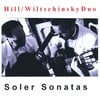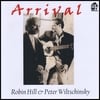All is going well in the recording department.
The microphone we finally settled on is a Neumann.
The reason for this, is that it is the only microphone we have tried, which is able to capture the full natural sound of the guitar without losing any quality.
A problem we had with all the other microphones we tried, was that, although the bass strings recorded well, the treble strings had a 'metallic' sound, which wasn't doing Robin's fabulous Miguel Rodriguez guitar justice.
Not so with the Neumann.
Having reported on the testing process the other day, and all 109 takes, the final test was to shut Robin in his music room, with guitar and also freshly recorded piece, then the rest of the family stood outside, listened, and tried to identify whether it was live or recorded.
The Neumann passed the test, and the children think we've gone mad....
Robin isn't one to make life easy for himself.
His first chosen piece is, 'Una Limosna por el Amor de Dios' by Agustin Barrios, which translated means, 'An Alm for the Love of God'.
This, and 'Recuerdos de la Alhambra' by Francisco Tarrega, are probably the two most famous 'tremelo' pieces which, as well as making huge demands on the right hand, are also very tricky in the left hand.
The tremelo is one of the most difficult effects and techniques to master on the guitar, as it relies on the rapidity of execution between the thumb, anular, middle and index fingers, p,a,m,i, of the right hand, for the 'classical tremelo', and for the 'flamenco tremelo', which has five notes, the fingering is, p,i,a,m,i.
It's made all the more difficult in the aforementioned examples as they constantly change from top string to inner strings for the tremelo notes while the right hand thumb provides the arpeggiated accompaniment.
The left hand , particularly in the Barrios, has many awkward stretches and hardly ever repeats itself. The tremelo is such an impressive technique that, when Robin introduces a piece in concert, involving the tremelo, he now gives a demonstration of how it works, very slowly initially, and then, at full speed.
Audiences love it.
Fortunately Robin is well prepared.
When he wrote 'The Guitar Gymnasium', (or see my links section for Amazon UK and USA), the right hand exercises were written with the intention of developing and strengthening the independence of the right hand fingers, for just this reason, alongside the Tarrega exercises, which are also in the book.
So Robin is now able to record, listen, learn, then re-record until he is satisfied.
As Glenn Gould said, "The tape recorder is the finest teacher."
Reviews
'As always, it was sheer pleasure to observe Robin Hill's remarkable fluent technique: everything looks easy when he plays it.' Colin Cooper- Classical Guitar Magazine -----
'Wonderful for their (Hill & Wiltschinsky) precision, touch and clarity of sound... refined virtuosity, the achievement of a long interpretive process.' Il Giornale D'Italia (Rome) -----
'I loved your CD and thought your technique and performance were fabulous...' Rick Wakeman
Subscribe to:
Post Comments (Atom)


















No comments:
Post a Comment